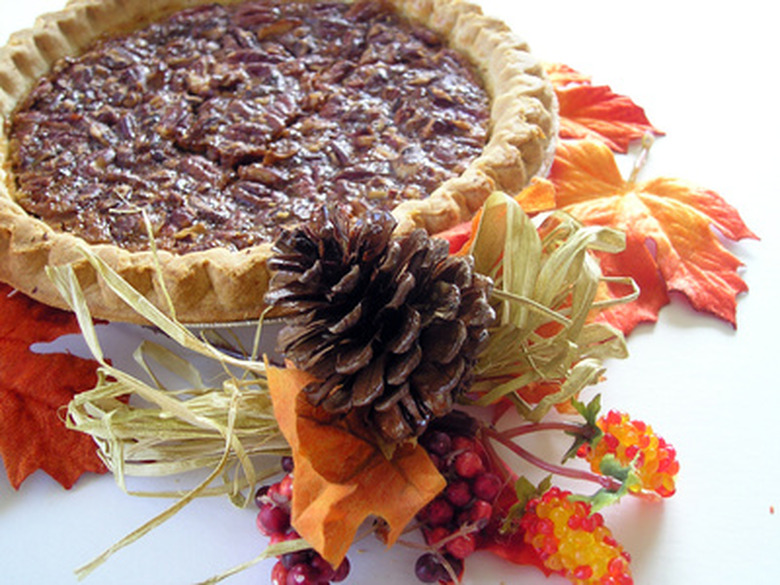Life Span Of Pecan Trees
Over 500 varieties of pecan trees (Carya illinoinensis) exist around the world. A deciduous tree, the pecan has been used as a primary food source for thousands of years. Native to the Mississippi flood plain region of the United States, the tree prefers deep, fertile soil that is well-draining. It thrives in the southern states where the summer conditions offer warm days and the winter provides only moderate cooling which helps sustain the tree's long life span of over 300 years. The tree holds high value as a major commercial crop producer in the southern states.
Characteristics
During the pecan tree's life span it grows to approximately 150 feet in height and up to 7 feet in diameter. The twigs of the tree appear a soft grey in color with a fine fur but as they mature they sport a rough texture that is deeply furrowed with age. Each leaf appears narrow and comes to a sharp point on the end. The top of the leaf is a dark green with the underside appearing a light-yellowish color.
- Over 500 varieties of pecan trees (Carya illinoinensis) exist around the world.
- It thrives in the southern states where the summer conditions offer warm days and the winter provides only moderate cooling which helps sustain the tree's long life span of over 300 years.
Seed Production
When the tree reaches 20 years of age it begins to produce seeds. Each year the tree produces more prolific seeds with the greatest harvests occurring when the tree is between 75 to 225 years old, according to the U.S. Forest Service. A mature pecan tree has the capability of yielding around 100 pounds of pecans per year. The seeds of the pecan tree are treasured as a valuable wildlife food source for small mammals and birds.
Seedling Growth
After the seeds fall from the pecan tree in the late fall or early winter they remain dormant until the following spring. Germination begins to occur in April. The small seedlings require moist soil conditions to thrive and will easily die if they suffer periods of drought. Once the seeds germinate the seedlings begin to grow their growth rate is quite rapid.In favorable conditions a seedling will normally grow 3 feet per year.
- When the tree reaches 20 years of age it begins to produce seeds.
- After the seeds fall from the pecan tree in the late fall or early winter they remain dormant until the following spring.
Flower Production
A mature pecan tree begins to produce flowers in April. It has both male and female flowers so the tree is capable of self pollination. The male catkins occur on the previous years growth. The female flowers appear smaller and star shaped. Despite being self fertile the tree produces the best crop if it receives cross pollination, according to the University of Florida. Pollination is wind driven and insect aided. The nuts are born in clusters of up to six.
- A mature pecan tree begins to produce flowers in April.
- The male catkins occur on the previous years growth.
Insects and Diseases
Although the pecan tree has a long life span it can sustain serious damage from insects and disease if the tree does not receive proper care. The resulting injury can shorten the tree's life span and cause its rapid decline. More than 20 insects and mites damage the pecan tree, according to the North Caroline State University. The twig girdler, pecan weevil, aphids and stink bugs all damage the twigs and seeds of the tree. Proper spraying of pesticides can help combat most insects. Fungicide applications help prevent pecan tree diseases.
